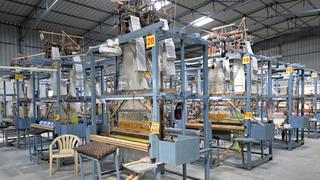Photo used for representation purpose only.
| Photo Credit: The Hindu
Lack of localisation and complexity of the Indian textile value chain result in higher costs for Indian exporters in the textile sector, relative to global competitors.
India’s textile production occurs across multiple independent and clustered Small and Medium Enterprises (SMEs) spread across the country. In contrast, vertically integrated ‘fibre-to-fashion’ firms in competitor nations such as China and Vietnam export low-cost products, maintain consistent quality, and are “nimble enough to adjust to the fast-changing nature of the industry,” said the Economic Survey.
Simple and liberal customs procedures further reduce regulatory costs and lend a competitive edge to the exports of global textile competitors such as China and Vietnam. On the other hand, in India, textile exporters are constrained by complex procedures.
Apart from possessing structural attributes (such as vertical integration, liberal labour laws, etc.) that allow for cost advantages, competitors in the textile markets also have the added benefit of Free Trade Agreements (FTAs) with consumer countries. In effect, Indian apparel exports do not face a level playing field compared to its competition.
In general, the costs for the textile industry are likely to rise over the coming years mainly because of the global structural shift towards sustainable sourcing. The EU, for instance, has as many as 16 pieces of legislation spanning the entire fashion value chain, which came into force between 2021 and 2024.
As the EU accounts for nearly 20% of India’s exports, such a shift poses a challenge for small enterprises that need to shift to environmentally sustainable production methods, says the Survey.
India has a great opportunity to align with the evolving global shifts in apparel demand because of the changing trends in the global textile industry. The global demand has shifted to products made from man-made fibre (MMF). As per the International Cotton Association, MMF comprised 77% of global fibre consumption in 2024, whereas it was just 22% for cotton. Indian textile and apparel exporters can benefit by tapping into the MMF value chain.
India’s share of global MMF production is currently 9.2% and the potential to catch up with the production levels of global leaders like Vietnam, China, and Taiwan is high. The MMF sector must move towards vertical integration and significantly invest in research and development and sustainable production techniques.
The industry should step up its research efforts and vertically integrate and tailor products to international quality and sustainability requirements. “Simplification, consolidation, and elimination of processes that consume the financial and managerial bandwidth of our exporters is a low-hanging fruit,” the Survey said.
Published – January 31, 2025 10:11 pm IST
The post Textiles sector should address issues related to cost competitiveness: Economic Survey appeared first on World Online.

